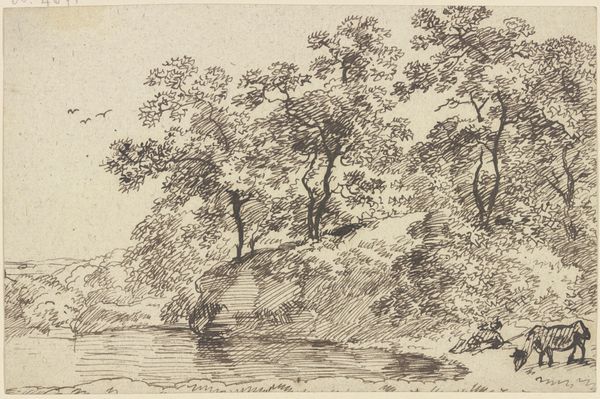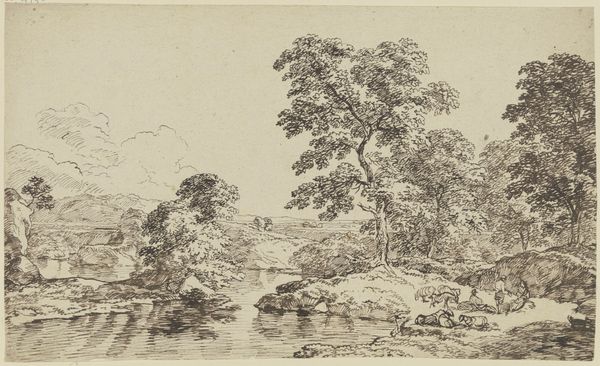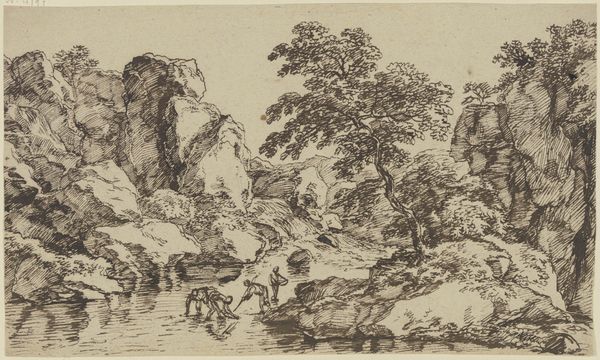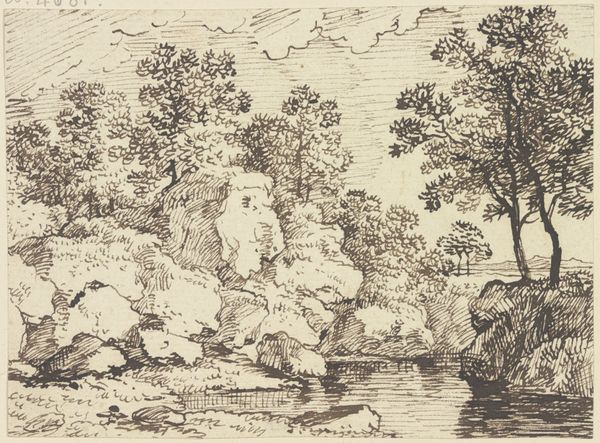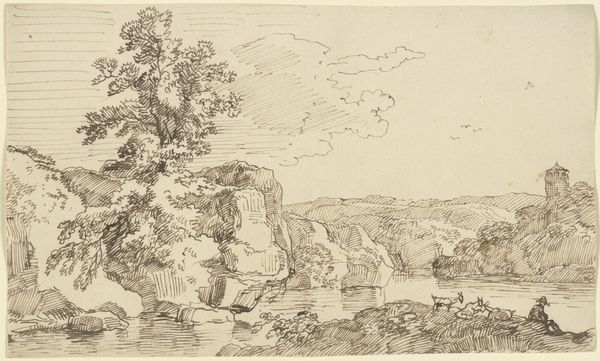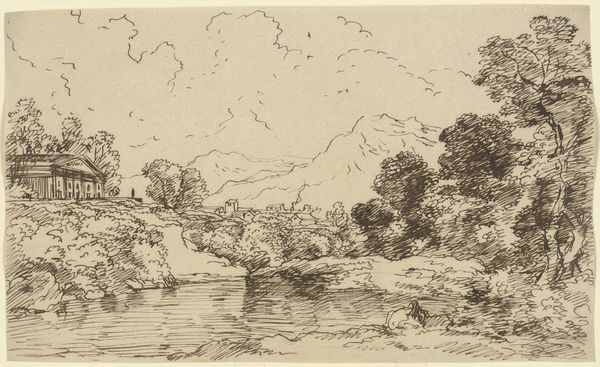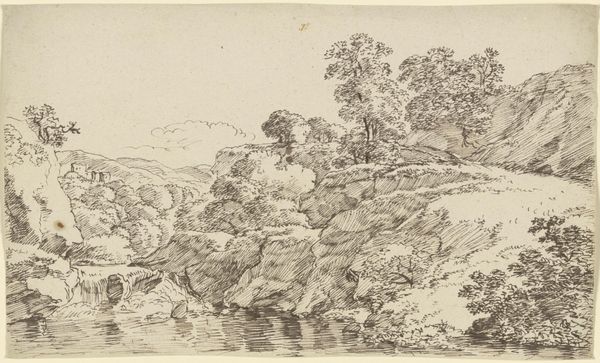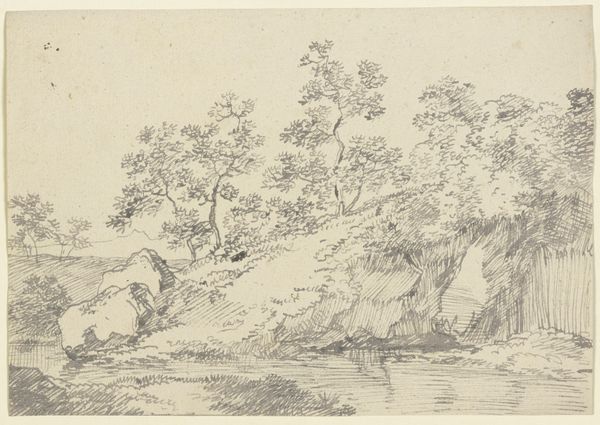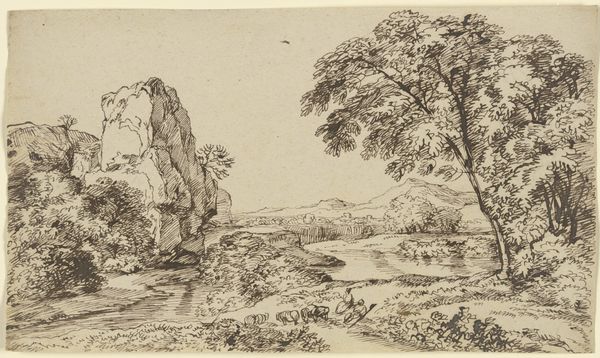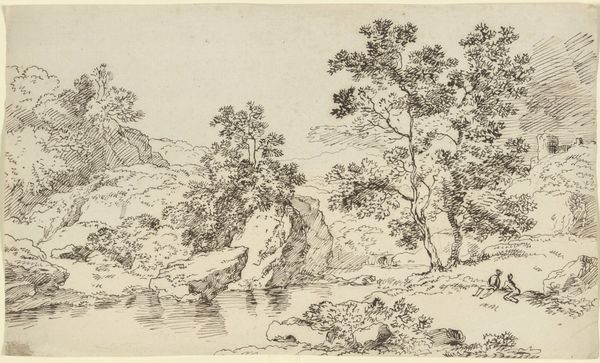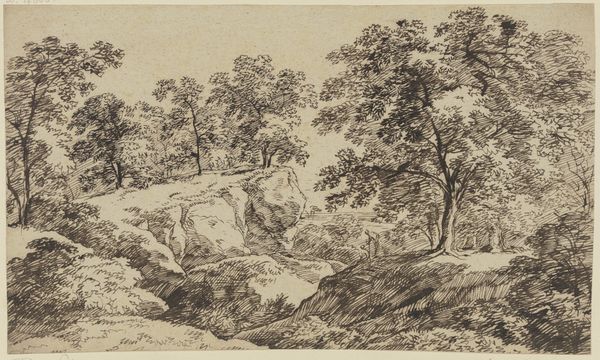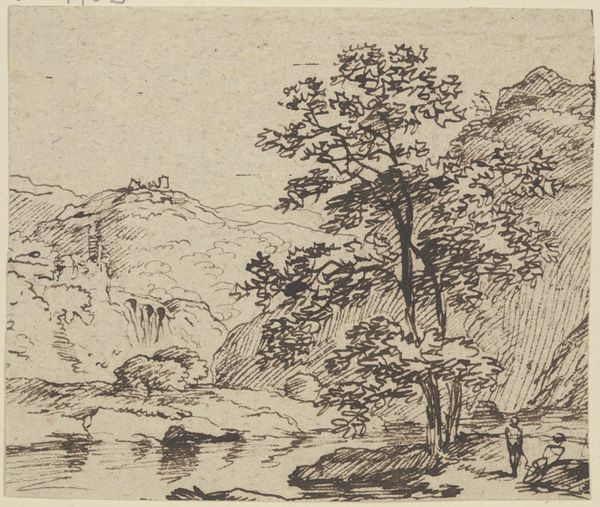
drawing, etching, ink
#
drawing
#
etching
#
landscape
#
etching
#
ink
#
15_18th-century
Copyright: Public Domain
Editor: This is "Strauchbestandene Felsböschung an einem Gewässer", or "Bushy Rock Slope on a Body of Water", by Franz Kobell. It is currently at the Städel Museum and made with drawing and etching in ink. I notice how the dark, intricate lines create a feeling of depth and texture. What do you see in this landscape? Curator: I see a cultural yearning for an idealized nature. The composition guides the eye towards the implied waterfall in the distance, suggesting both a visual and spiritual journey. Consider how water has served as a universal symbol of purity and renewal throughout history. How does the artist use the medium to emphasize certain features over others? Editor: That’s interesting. The way the water flows downward suggests constant movement. Is that connected with the cultural element that you're describing? Curator: Precisely. Water, especially moving water, often symbolizes time and change. But more broadly, the contrast between the precise etching and the freely drawn ink suggests a dialogue between the rational and the intuitive, something very central to art of this time. Do you feel this creates a sense of emotional tension? Editor: I think it does, subtly. I hadn’t picked up on that interplay. Curator: It reminds me of how even in idyllic landscapes, human sentiment is reflected in what the artists chooses to depict, thus imbuing an everyday setting with layered, emotive meanings. Thank you for pointing out those wonderful details to start our conversation today. Editor: Thank you! I've definitely learned a lot from just examining a few square inches of ink on paper.
Comments
No comments
Be the first to comment and join the conversation on the ultimate creative platform.
